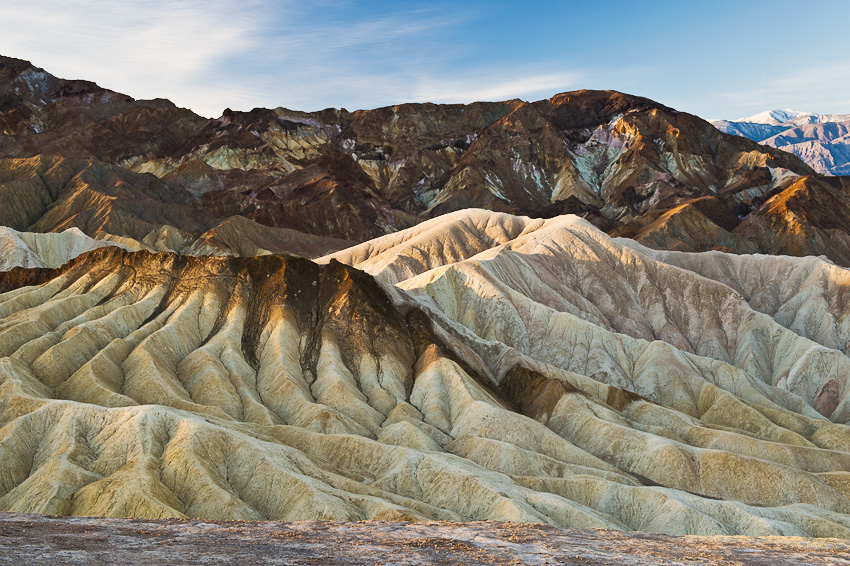In recent posts, I have stressed the importance of making a photograph when you first encounter an interesting scene or subject. If you don’t shoot it right then, you may never have another opportunity. You might not ever make it back there, or the scene might change significantly. Of course, if you do go back, conditions will inevitably be different. You just hope they’ll be even better.
Trying to get a better version of the photograph you first envisioned is a good reason to go back. But further exploration of the area is an even better reason.
Many photographers seem to have a mental checklist of locations, or even of specific shots, that they want to capture. Once they go to that place or get that photo, they can check it off their list, then go on to the next scene, never to return.
I can’t tell you how many times workshop or field trip participants have protested “but we’ve already been there” when we announce that we’re going back to a place we’ve been earlier. Instead of wanting to explore the area beyond their initial exposure, they want to move on to somewhere new and different. I was always taken aback by this, and never quite sure how to respond.
But think of this. Was Ansel Adams done with Yosemite after his first trip? Or his second? Or his twentieth? Did Jack Dykinga check Saguaro National Park off his list after his first trip there? Was Bill Lea so content with his first visit to Cades Cove or to the Everglades that he could write his beautiful books about them from that one trip?
Emphatically no. Each photographer returned innumerable times in different seasons, with different weather, during different times of day or night, exploring different areas in each location, always looking for new interactions of the light and weather in their favorite landscapes—even if they had previously been to the exact same spot dozens or even hundreds of times.
On your first visit, you’re likely to see the fairly obvious photographs. Until you’ve gained a bit of field experience, it’s pretty hard to envision a unique composition right off the bat. By all means, take the iconic shots. But unless you just want to collect copies of photographs you’ve already seen, it takes more exploration—more hours at least, and usually more than one trip—to even start to understand the nuances of any area you find visually appealing.
This is doubly true if the subject is new to you. For instance, if you have not photographed in a desert before, it might take you a while to see the incredible beauty in what might first look like a barren wasteland.
Death Valley National Park is one of my favorite landscape photography locations. On your first trip, you might wonder what you could possibly shoot in what looks like miles and miles of dry, treeless, desolate, brown nothingness. But, oh, those amazing shades of brown with those intricate patterns!
Really getting to know an area is the key to developing your own creative vision of the place. The more time you spend and the more often you visit an area, the more you will start to really see what it has to offer photographically. Only then can you decide how and when to best capture it. Immerse yourself in an area so you can explore, experiment, and refine your vision. This is how the healthy addiction to nature photography develops.
Nourishing this healthy addiction will, in time, push you beyond just wanting to capture pretty pictures and toward developing an insatiable urge to create unique expressions of Nature as you see and experience her.
It’s hard to instill this love of visual exploration from the outside, but conveying this sentiment might be the best way to respond to the workshop or field trip participant’s protests about going back to where we’ve already been.
©2015 Tom Vadnais Photography. All Rights Reserved.

